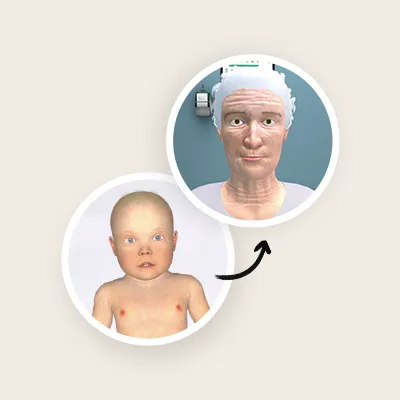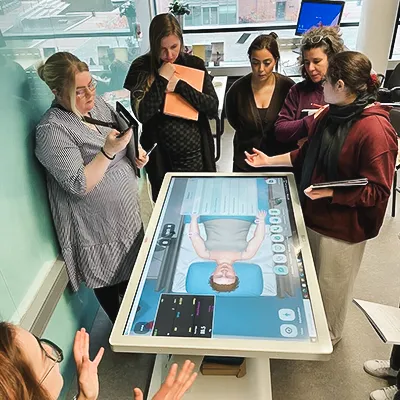At George Brown College in Canada, Lorraine Betts’ students are provided with a complete training experience by the combination of the clinical courses with the clinical simulation day.
From the educator’s perspective, Lorraine highlights the benefit of the students being exposed to a “wide range of clinical situations, which they actually won’t get in their clinical placement,” when practicing with Body Interact.
The other benefit, of the Virtual Patient Simulator that Lorraine mentions is its contribution to changing the way pupils are learning: “being an advocate for your patient and providing appropriate information that nurses need to give the doctor when they call him”, Lorraine explained.
Define a team leader
When using Body Interact in the simulator centre Lorraine tries to make the most of the safe and controlled training moment.
By giving each student a different role in the exercise and electing a team leader to manage it, the nursing educator finds that “when they are responsible for a team, they are working on their team building and communication skills”. Also, even though they do not have access to a real practitioner environment, once they graduate, they are required to function as a real practitioner and to display the necessary skills.
After simulating the future challenges of a nursing practitioner, Lorraine gets the chance to draw her conclusions.
As an academic Lorraine expresses her concerns about the new generations’ motivation challenges. However, she believes that, when schools provide Body Interact individual licenses for their students, it will foster self-directed learning by fitting appropriately with their curriculum and by expanding the learning beyond classroom.
Having said that, Lorraine adds that it is essential for an educator to make sure learners do not attempt a case the theoretical foundation of which they haven’t studied, yet.
[Take the chance to read Lorraine Betts most recent article on how virtual patients can be integrated into undergraduate nursing schools’ curriculum]
Body Interact Learning Lab – Part 4








